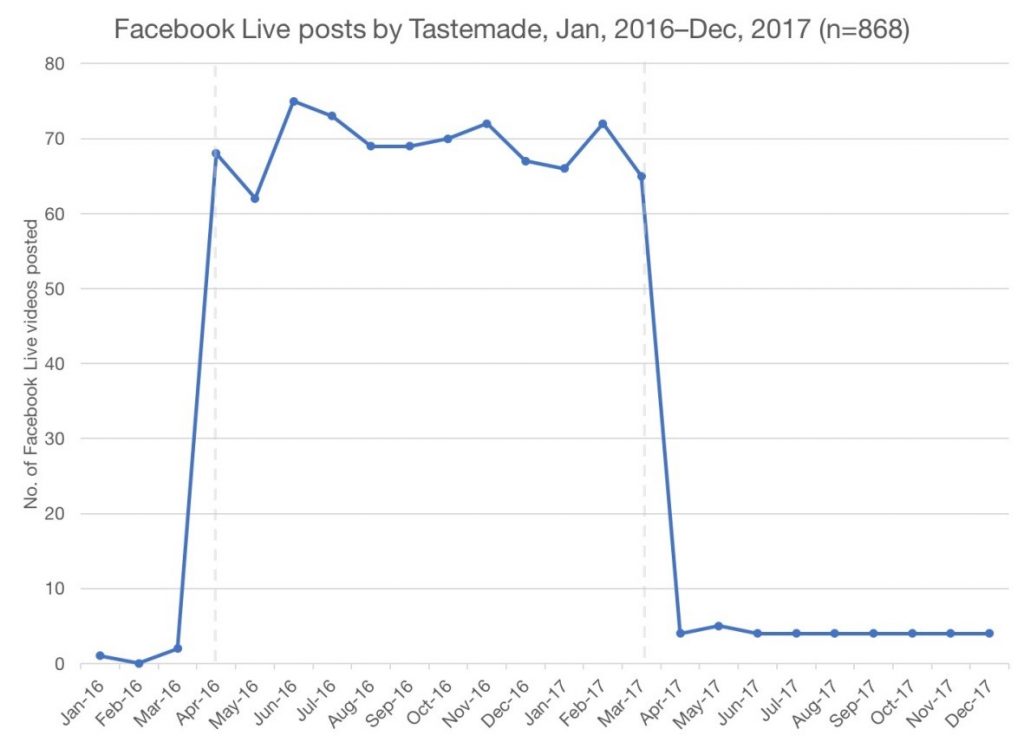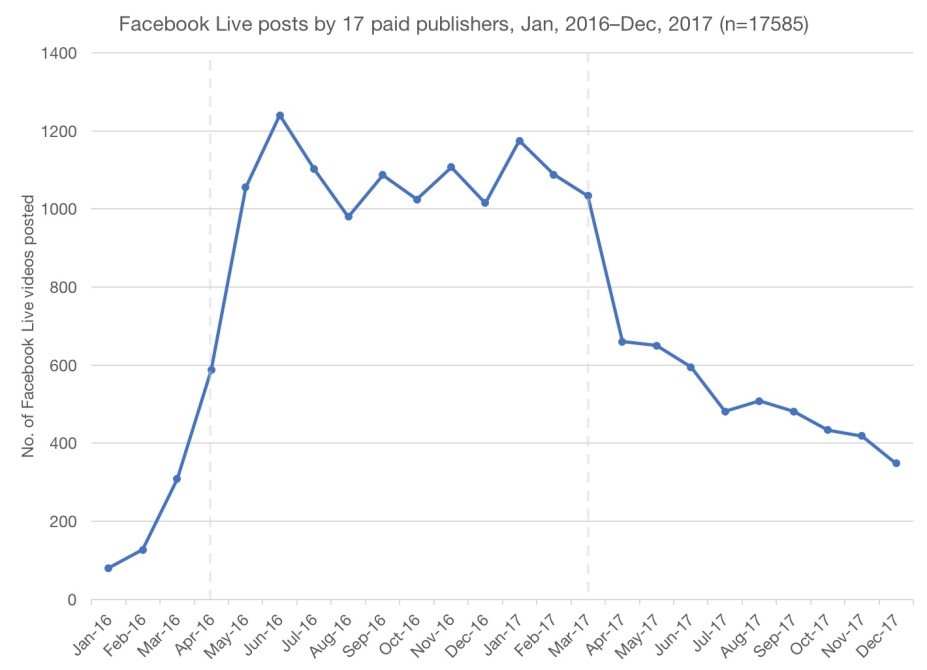When publisher payments dried up early last year, so did the video content. Is it RIP for Facebook Live?
For Tastemade, a digital native brand with a focus on food and travel, Facebook Live videos were a lucrative revenue stream — not because of the ROI or their pre-roll ad revenue, but because the brand was paid by Facebook to produce them.
According to Pete Brown of the Columbia Journalism Review, Tastemade was paid a reported one million dollars to use Facebook Live for its video content.
Once those payments stopped in the spring of last year, so did Tastemade’s interest in putting up videos.
“Between January 2016 and December 2017, Tastemade properties—including regional versions of the core brand, plus Tastemade Travel, Sweeten, Nourish, and Tiny Kitchen—posted 868 Facebook Live videos,” Brown explains.
“Of these, 828—or 95 percent—were posted in the 12-month period between April 2016 and March 2017 when Facebook was reportedly providing the company with financial incentives,” he notes.

Source: CrowdTangle
Tastemade is just one of the 17 publishers reportedly paid to use the platform during that time. And when Facebook ended the payments early in 2017, Live video postings from those partners fell off the cliff. (The paid period is noted on the graph below between the dotted lines. The numbers speak for themselves.)

Source: CrowdTangle
Brown notes that, when the program launched, “the algorithm shift was considered almost as significant as the payments. As Recode (part of Vox Media, one of the publishers paid to produce Live content) put it, ‘The truth is, Facebook doesn’t need to write publishers checks to get them to do what it wants: All it needs to do is make it clear what kind of stuff it wants in its News Feed.’”
It’s also worth noting that during that time, there was a lot of talk about when the video bubble would burst, as brands searched for ways around ad blockers and sought to monetize their video content with pre-roll ads. It didn’t help that Facebook was discovered to be wildly overestimating video ad metrics, giving agencies fits in trying to calculate any kind of real ROI.
“There are numerous other examples of publishers whose Facebook Live output likewise fell away once their contractual obligations and associated payments ended,” Brown writes. Partners like the New York Times, CNN, Huffington Post and others definitely helped fuel the interest over Facebook Live. Now that the money’s dried up and they’ve backed away, will other brands follow suit?
If they can monetize it, why not? But that doesn’t seem to be happening. As Brown reports, “From this perspective, it is not Facebook Live the product that is a dud so much as Facebook’s inability or unwillingness to figure out how to pay publishers.”
Looks like “just being there” isn’t enough for brands on Facebook anymore, as algorithm changes makes it increasingly less likely they will connect with their audiences. It’s an interesting shift we are witnessing, and it’s great to see publishers thinking more clearly about what’s worth their effort.
